Nestled gracefully on a rocky outcrop at the mouth of Duong Dong River, Dinh Cau Temple is not only a revered spiritual site but also a stunning vantage point to witness Phu Quoc’s legendary sunsets and coastal charm.
In Corona Resort & Casino Phu Quoc‘s travel guide, you’ll discover the temple’s history, architectural highlights, spiritual importance, and cultural festivities – everything you need to make your visit meaningful and memorable.
The Legend and History of Dinh Cau Temple
Step into centuries of maritime myth and local belief. Legends tell that in the 17th century, when fishermen struggled against fierce storms, a giant rock mysteriously emerged from the sea, guiding them safely to shore. Believing it to be a divine signal, the community built a small shrine that later evolved into what we now know as Dinh Cau Temple.
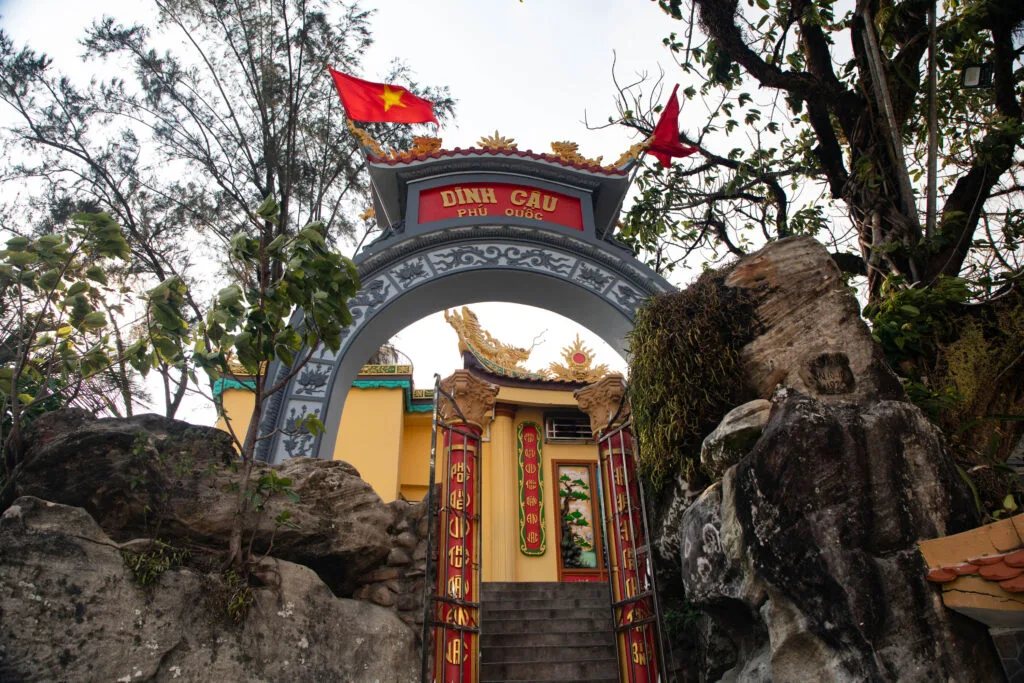
The temple structure visible today was officially constructed in 1937 and carefully restored in 1997. Since then, it has been recognized as an essential provincial relic of Kien Giang Province (now known as An Giang). Far from being just a historic monument, Dinh Cau Temple has remained a vibrant spiritual destination closely tied to the island’s maritime life.
The temple is dedicated to Chua Ngoc Nuong Nuong, the Sea Goddess, and her two protective sons, Cau Quy and Cau Tai, who are worshipped for protecting sailors and ensuring safe journeys. Each year, particularly on the 15th–16th days of the tenth lunar month, the temple transforms into a hub of pilgrimage where locals and visitors gather to pay homage and pray for peace and prosperity.
See more: 5+ Must-Visit Phu Quoc Pagodas: A Complete Guide 2025
Exploring the Unique Architecture of Dinh Cau
The charm of Dinh Cau Temple lies not only in its sacred past but also in its striking architecture. Unlike many other coastal temples in Vietnam, Dinh Cau is built directly on rugged stone outcrops that extend into the sea, creating a dramatic yet serene setting for the temple. This harmonious combination of spiritual devotion and natural beauty makes it one of the most iconic landmarks in Phu Quoc.
A Fusion of Vietnamese and Chinese Architectural Styles
The temple’s design reflects a blend of Vietnamese spiritual architecture and Chinese decorative elements. The roof is curved upward in traditional Vietnamese style, yet decorated with dragon and phoenix motifs – both symbols of prosperity, power, and divine protection in East Asian culture. Inside, the wooden beams are painted in bright red and gold, while the walls are adorned with intricate patterns that highlight Phu Quoc’s multicultural influences from centuries of maritime trade.
The Iconic Lighthouse and the 29 Winding Stone Steps
To reach Dinh Cau Temple, visitors must climb 29 winding stone steps – symbolizing the challenges of life that one must overcome to find peace and enlightenment. At the top sits a small but distinctive lighthouse, which has long been a guiding beacon for local fishermen returning home after long nights at sea. Though modest in scale, this lighthouse has become an inseparable part of the temple’s identity.
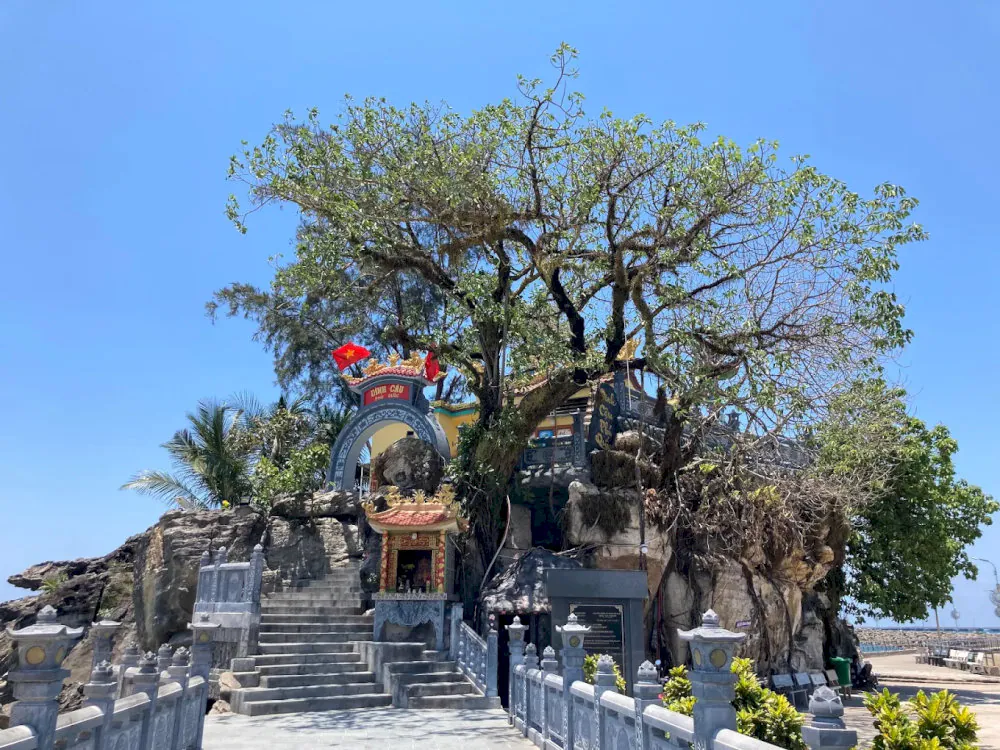
Intricate Carvings, Curved Roofs, and Sacred Statues
Inside the main hall, sacred statues of the Sea Goddess and her sons stand at the altar, surrounded by offerings of flowers, fruits, and incense. The scent of burning incense blends with the salty sea breeze, creating an atmosphere that is both mystical and serene. Wooden beams with decorative carvings, gracefully curved roofs, and symbolic patterns all contribute to the temple’s charm, representing blessings of peace, safety, and prosperity for the islanders.
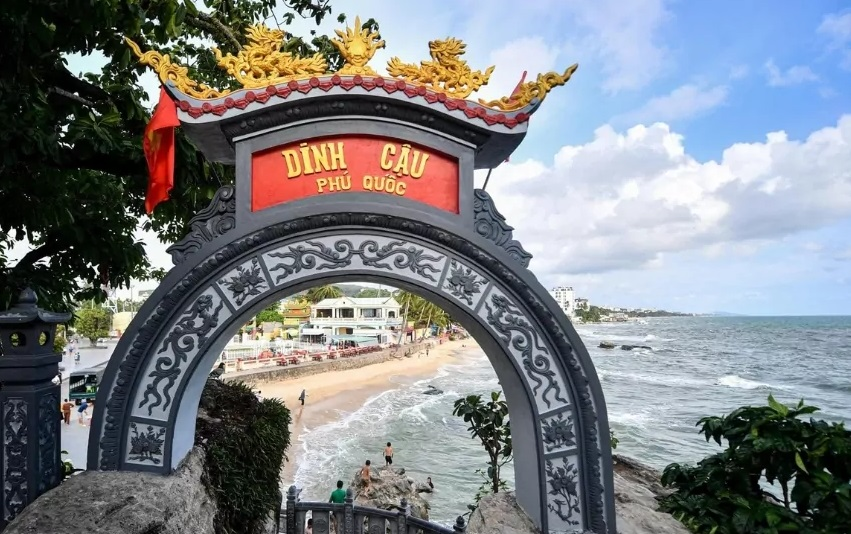
Spiritual Significance and Daily Rituals
More than a historic site, Dinh Cau Temple remains a living sanctuary of faith. For generations, it has been an inseparable part of Phu Quoc’s spiritual life. Tourists do not simply visit the temple but are also deeply woven into the daily practices of local fishermen and families.
A Sacred Place for Prayer Before Setting Sail
For generations, local fishermen have visited the temple to pray before embarking on their voyages. Believing that the Sea Goddess would protect them from storms and misfortune, these prayers became an essential part of Phu Quoc’s fishing culture. Even today, families come here to seek blessings for safety, prosperity, and smooth journeys.
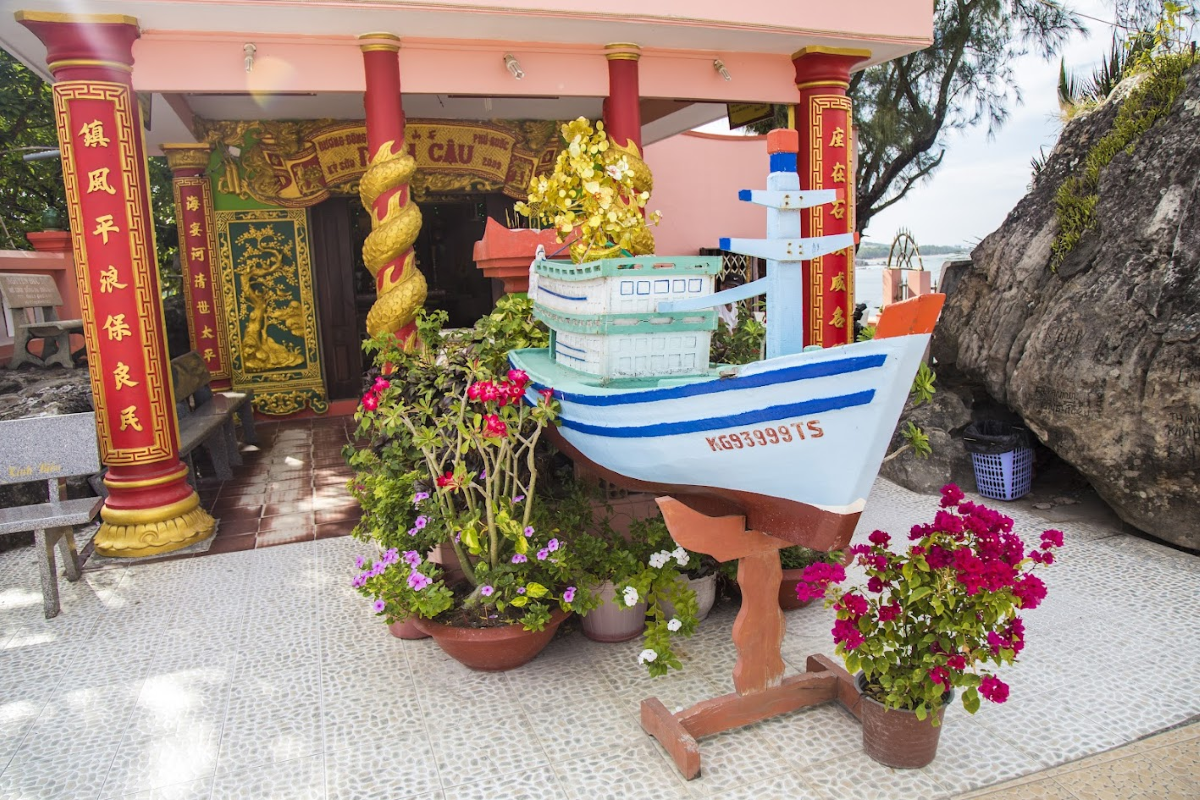
Understanding the Deities Worshipped Within the Temple
At the spiritual heart of the temple is Chua Ngoc Nuong Nuong, the revered Sea Goddess. Alongside her, Cau Quy and Cau Tai are worshipped as protectors of sailors and bringers of wealth. Together, these deities symbolize the balance between safety at sea and prosperity on land, reflecting the hopes of Phu Quoc’s seafaring community.
Daily Offerings and the Atmosphere of Local Belief
Visitors to Dinh Cau Temple will often find locals offering incense, fruit, and flowers. The rhythmic chants of prayers blend with the sound of waves, making each visit feel like a journey into both nature and spirituality. This daily devotion preserves the temple’s sacred aura and offers travelers a deeper understanding of local belief systems.
The Dinh Cau Festival: A Vibrant Cultural Celebration
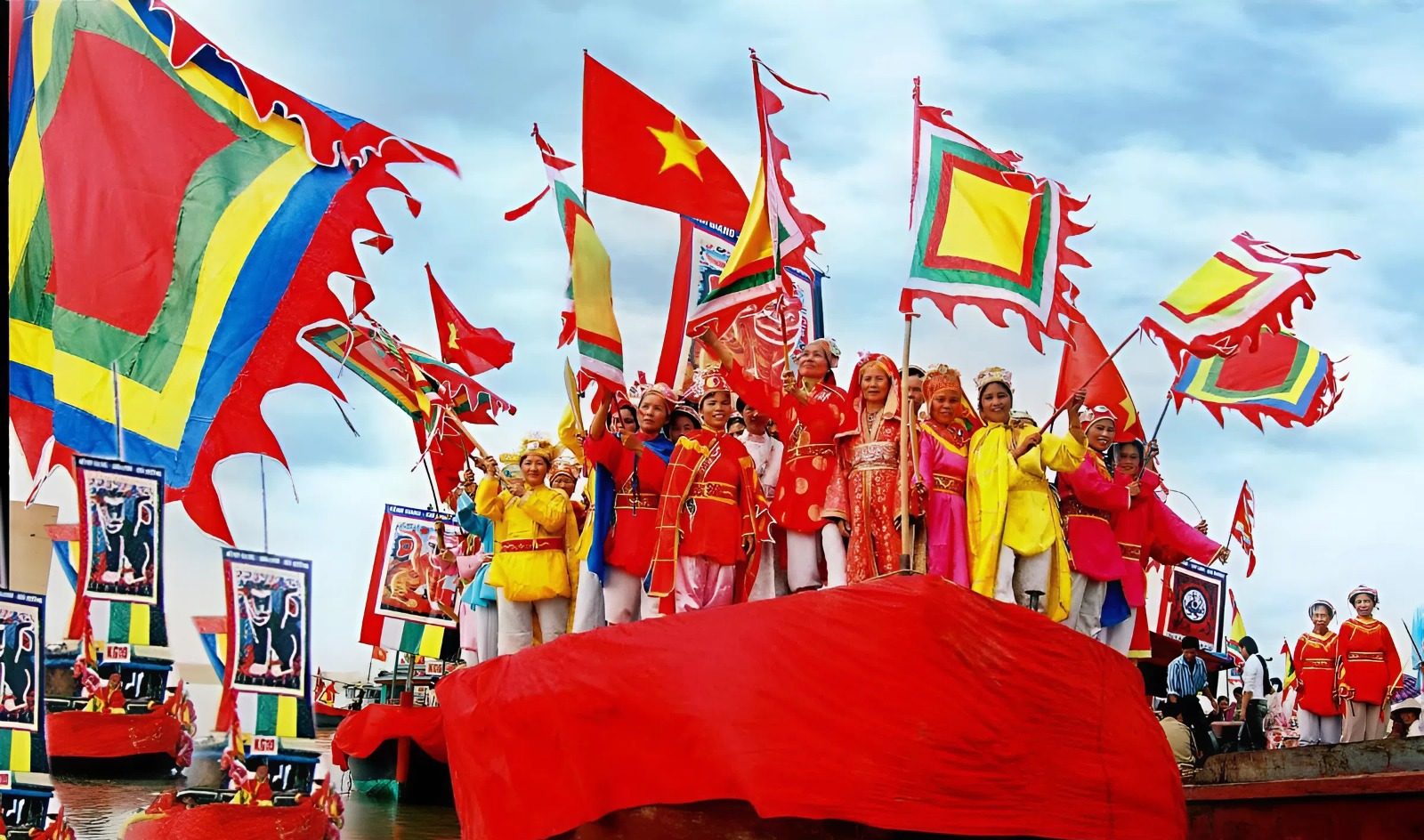
The pinnacle of devotion at Dinh Cau Temple comes alive during the annual festival, celebrated on the 15th and 16th days of the tenth lunar month. This lively event attracts both locals and travelers, featuring colorful processions, traditional music, and communal prayers for peace and prosperity. The festival not only preserves ancient traditions but also strengthens community bonds, making it an unmissable cultural experience for visitors seeking a deeper connection with Phu Quoc.
A visit to Dinh Cau Temple offers far more than scenic views—it is a journey through history, spirituality, and culture, deeply woven into the fabric of Phu Quoc life. Whether you come to admire its architecture, join a daily ritual, or witness the vibrant festival, this temple remains a must-see destination in 2025. And after your spiritual exploration, why not indulge in world-class leisure and entertainment at Corona Resort & Casino Phu Quoc, the perfect complement to your island adventure?
